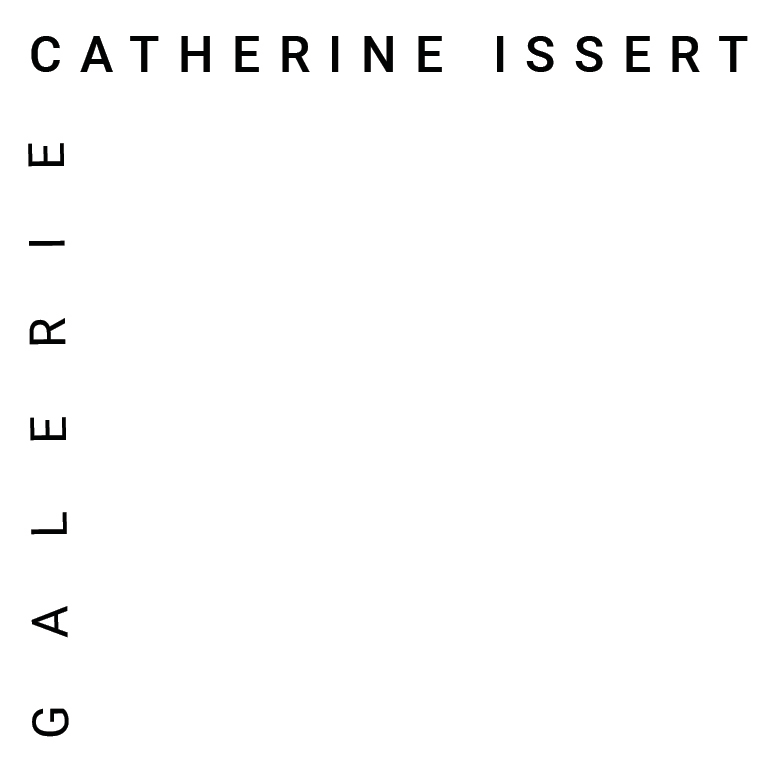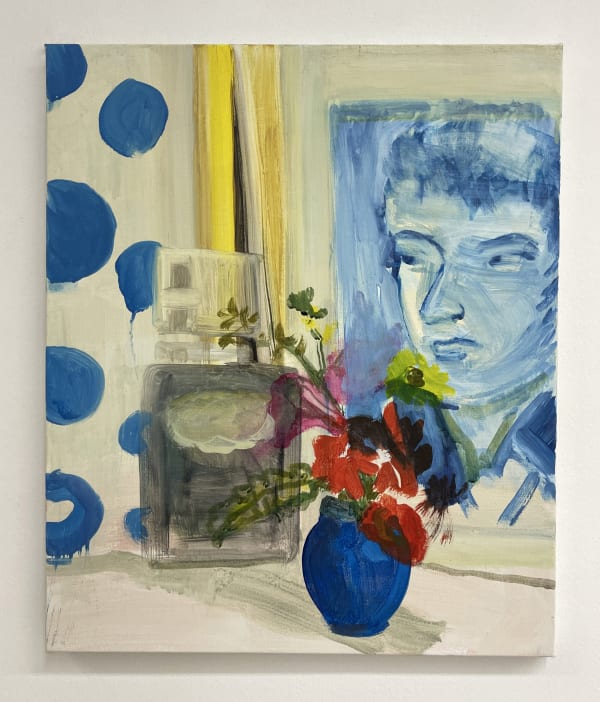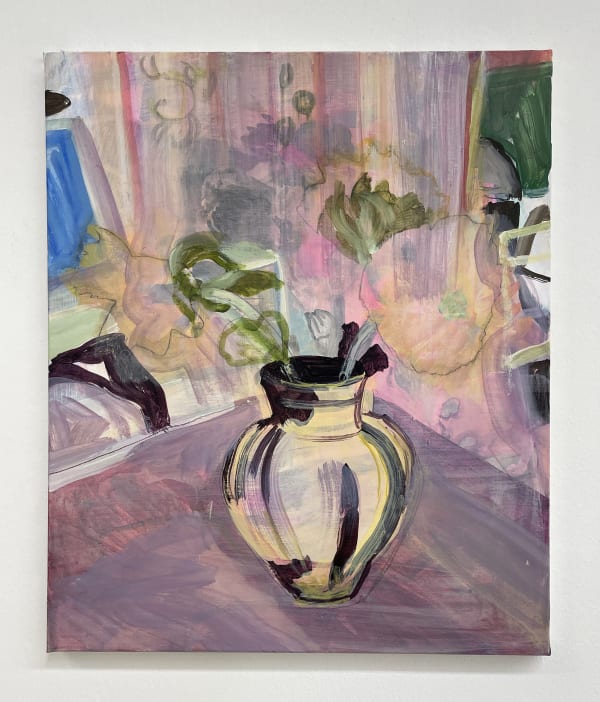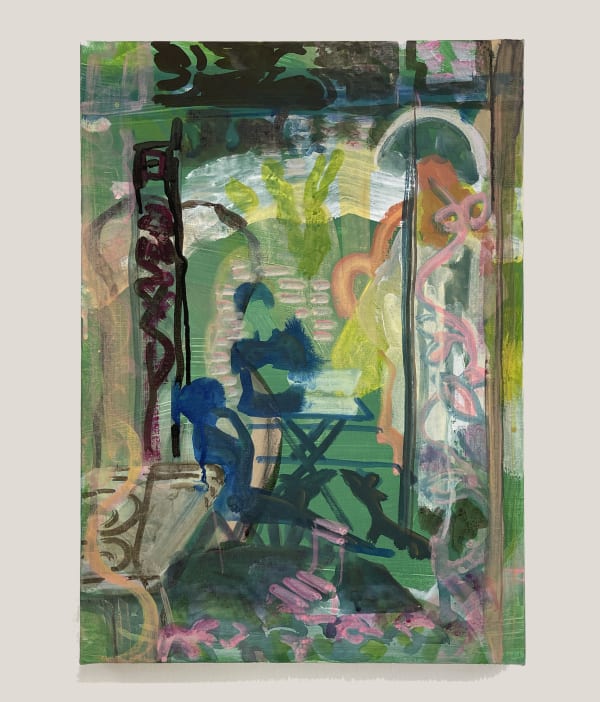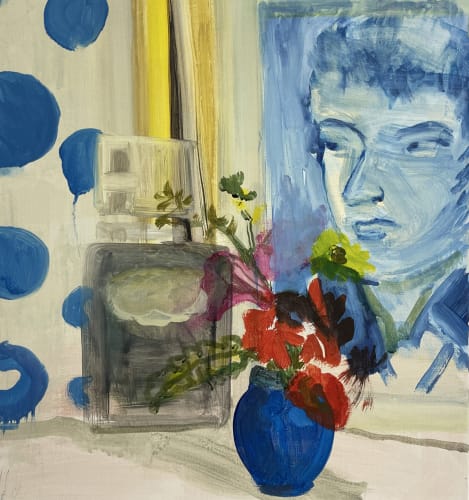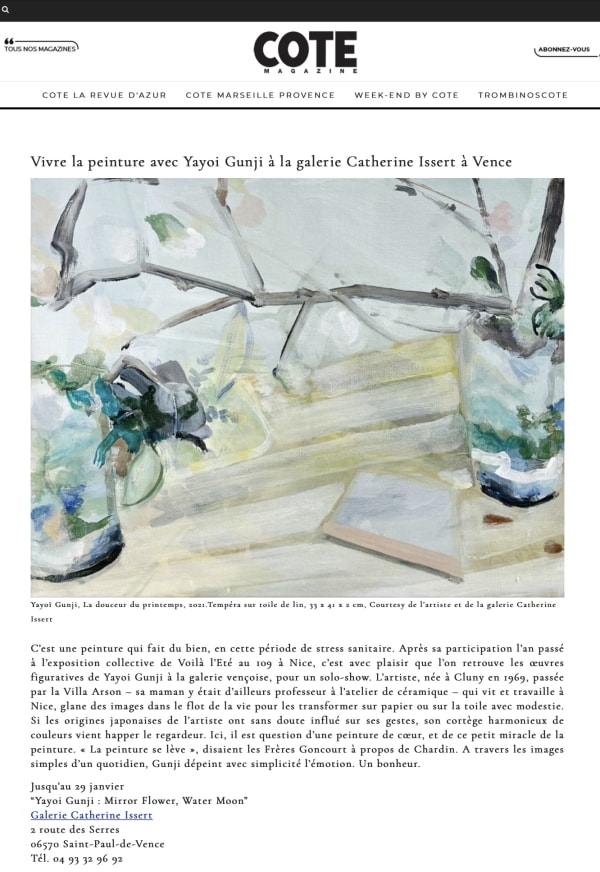Yayoi GUNJI : Mirror Flower, Water Moon
Arrêt sur image
Comme la passe de Maloja, près de Sils Maria, charrie son lot de nuages en un flux continu et changeant, la peinture de Yayoï Gunji véhicule des images en un cortège modeste et varié.
Des images prises souvent sur la toile du monde et qui se fixent, transformées, sur le papier ou sur la toile peinte.
Un arrêt sur image en quelque sorte.
L’ image guide le tableau mais c’est le geste qui la défait pour la reconstruire et créer la peinture.
L’ image produit du geste et de la couleur qui ne la reproduisent pas mais nous donnent à voir ce miracle modeste et sans cesse renouvelé qu’est le tableau.
Il me revient en memoire dans un entretien accordé à un magazine, D. Hockney (un des modèles stimulants de Yayoï Gunji) citant un proverbe chinois selon lequel pour peindre « il faut l’œil , la main et le cœur » . Et il ajoute « Deux éléments ne suffisent pas ».
La peinture c’est l’image plus le regard, plus la main, plus le cœur.
Cette peinture qui ne recherche pas l’astuce arrive comme en écho d’artistes au premier rang desquels outre Hockney il faut citer Vuillard, en n’oubliant pas que Yayoï Gunji est née en France de parents japonais.
Et nul doute que cette ascendance japonaise n’introduise un élément subtil dans la gestualité à l’œuvre dans le tableau. La vitesse, la spontanéité, le choix de peintures à séchage rapide.
Yayoï Gunji a pu expérimenter les vertus du métissage durant ses années d’étude à la villa Arson où sa mère Yoko dirigea longtemps comme professeur l’atelier de céramique.
A cette mère, professeure et artiste, elle doit son goût pour un dessin différent de celui dont elle a suivi l’enseignement, les deux agissant non en négatif mais en valeureuse cohabitation.
De ses séjours réguliers à New York depuis 2010, elle retiendra les vertus de l’esprit d’ouverture et l’absence de préjugés.
En cette époque où l’art se mesure et s’apprécie à l’aune d’un message, la peinture de Yayoï Gunji se présente plutôt comme une célébration de la beauté du monde comme parfois nous la projette au petit matin une crique ouverte sur la Méditerranée, cette mer que Yayoï Gunji fréquente assidûment.
Cette beauté emplie de désirs que la peinture cristallise comme une sorte d’éternité de l’instant .
_____________________________________
Still image
Just as the Maloja mountain pass near Sils Maria gathers its share of clouds into a constant but changing flow, Yayoï Gunji’s painting transports images in a modest, varied procession.
Images often taken from the web of the world which take their place, transformed, on paper or painted canvas.
Still, or frozen, images, in a way.
The image guides the picture, though it is the gesture that unravels it in order to reconstruct it and create the painting.
The image invokes colour and the gesture, which do not reproduce it but allow us to see this modest and constantly renewed miracle, which is the painting. I recall, in an interview granted to a magazine, D. Hockney (one of Yayoï Gunji’s inspiring models) quoting a Chinese proverb, according to which painting requires «an eye, the hand and the heart». And adding, «Two elements are not enough».
Painting is the image plus the eye, plus the hand, plus the heart.
Not searching for any tricks or ploys, this painting appears rather like an echo of top-ranking artists among whom, in addition to Hockney, Vuillard should be mentioned, bearing in mind that Yayoï Gunji was born in France of Japanese parents.
And there is no doubt that this Japanese heritage introduces a certain subtlety into the gestuality at work in the picture. Speed, spontaneity, choosing paints that dry fast.
Yayoï Gunji was able to experiment with the virtues of interbreeding during her years as a student at the Villa Arson where her mother, Yoko, was a teacher for a long time, in charge of the ceramics studio.
To this mother, a teacher and artist, she owes her taste for drawing which is different from that she had been taught, the two not working in opposition, but in valiant cohabitation.
From her regular trips to New York since 2010, she would retain the virtues of open-mindedness and the lack of any prejudices.
In these days when art is assessed and appreciated for its impact as a message, Yayoï Gunji’s painting can rather be seen as a celebration of the beauty of the world, as sometimes projected early in the morning by a creek opening out to the Mediterranean, a sea to which Yayoï Gunji devotes a great deal of time.
This beauty full of desires that painting crystallizes like a kind of eternity for the moment.
